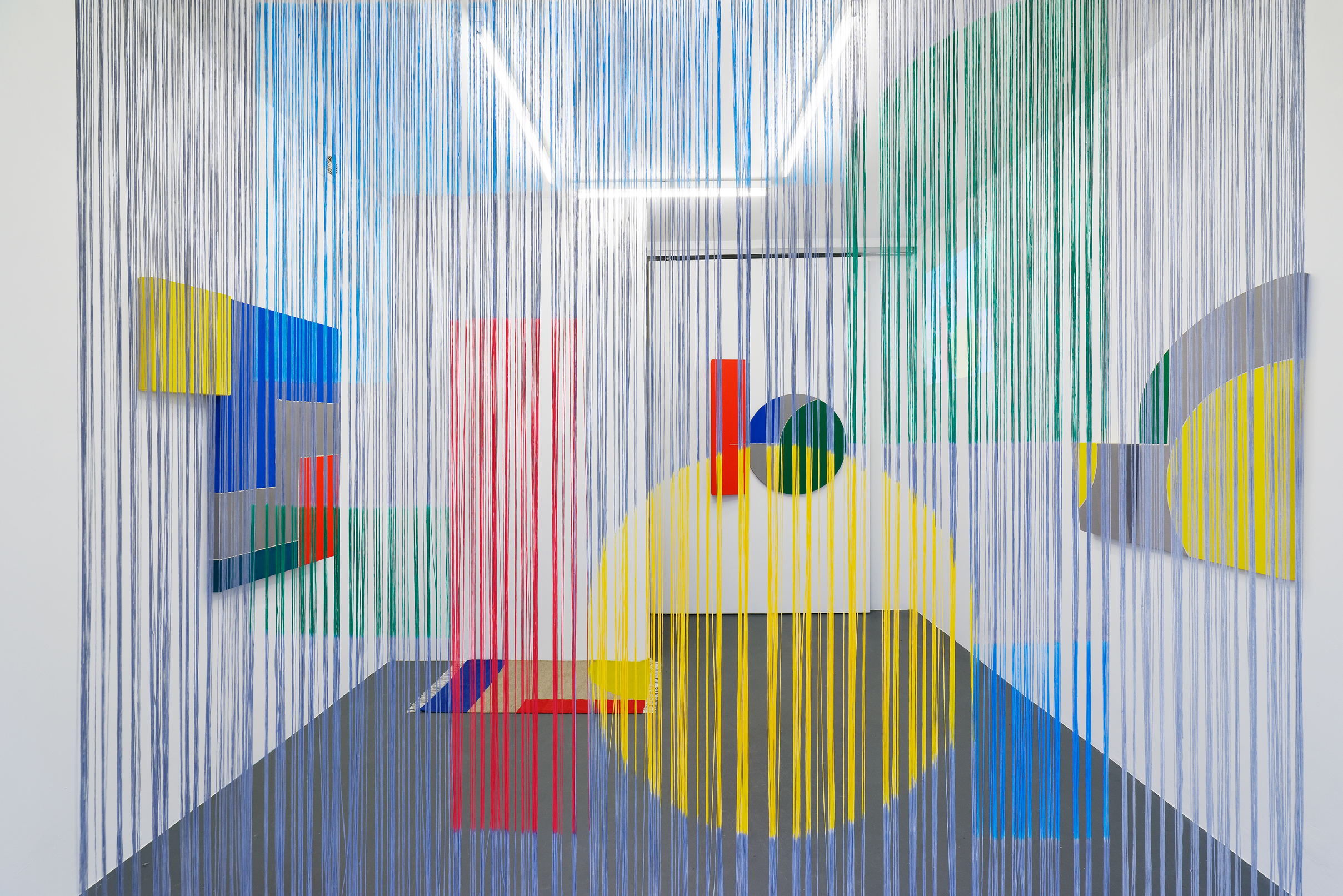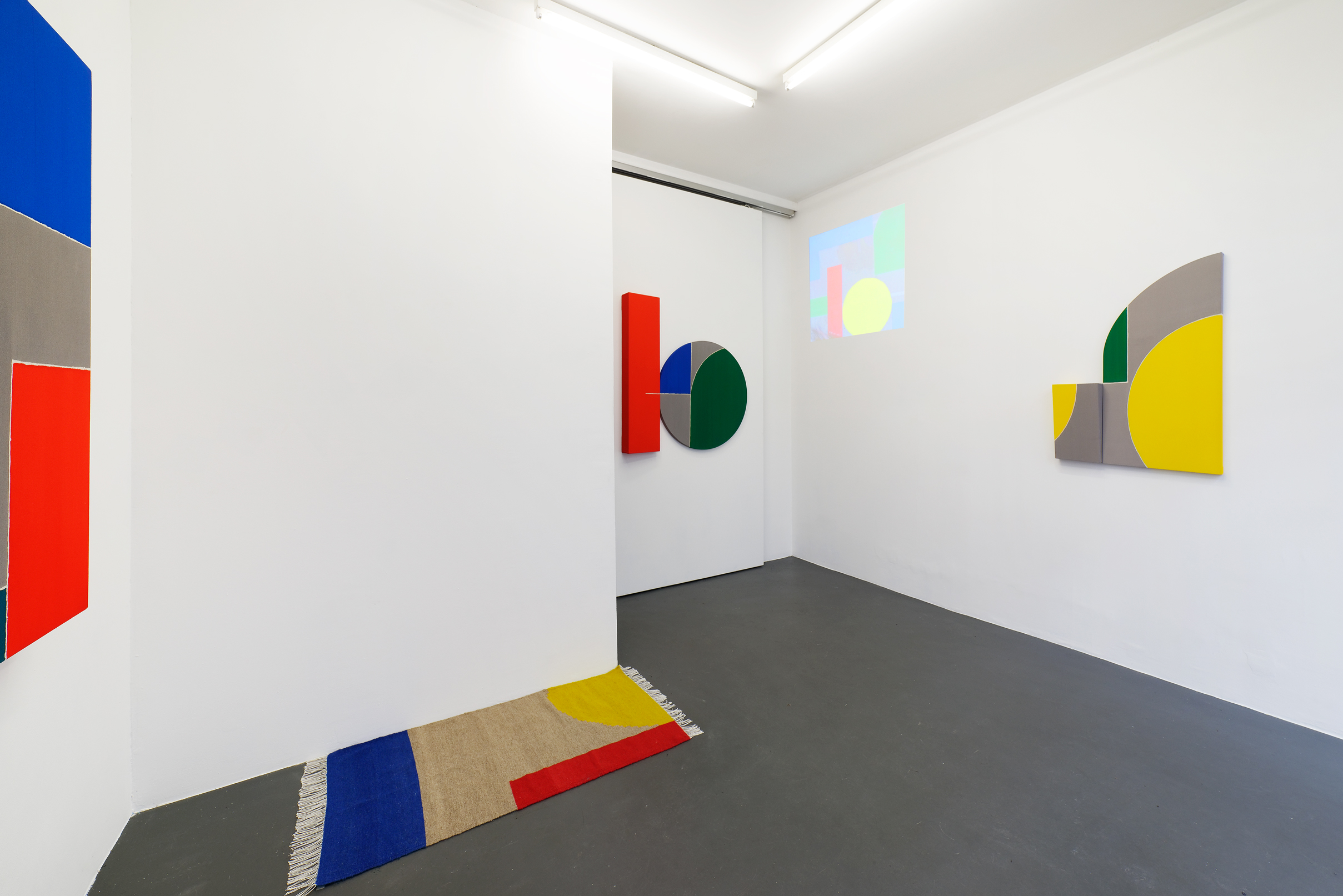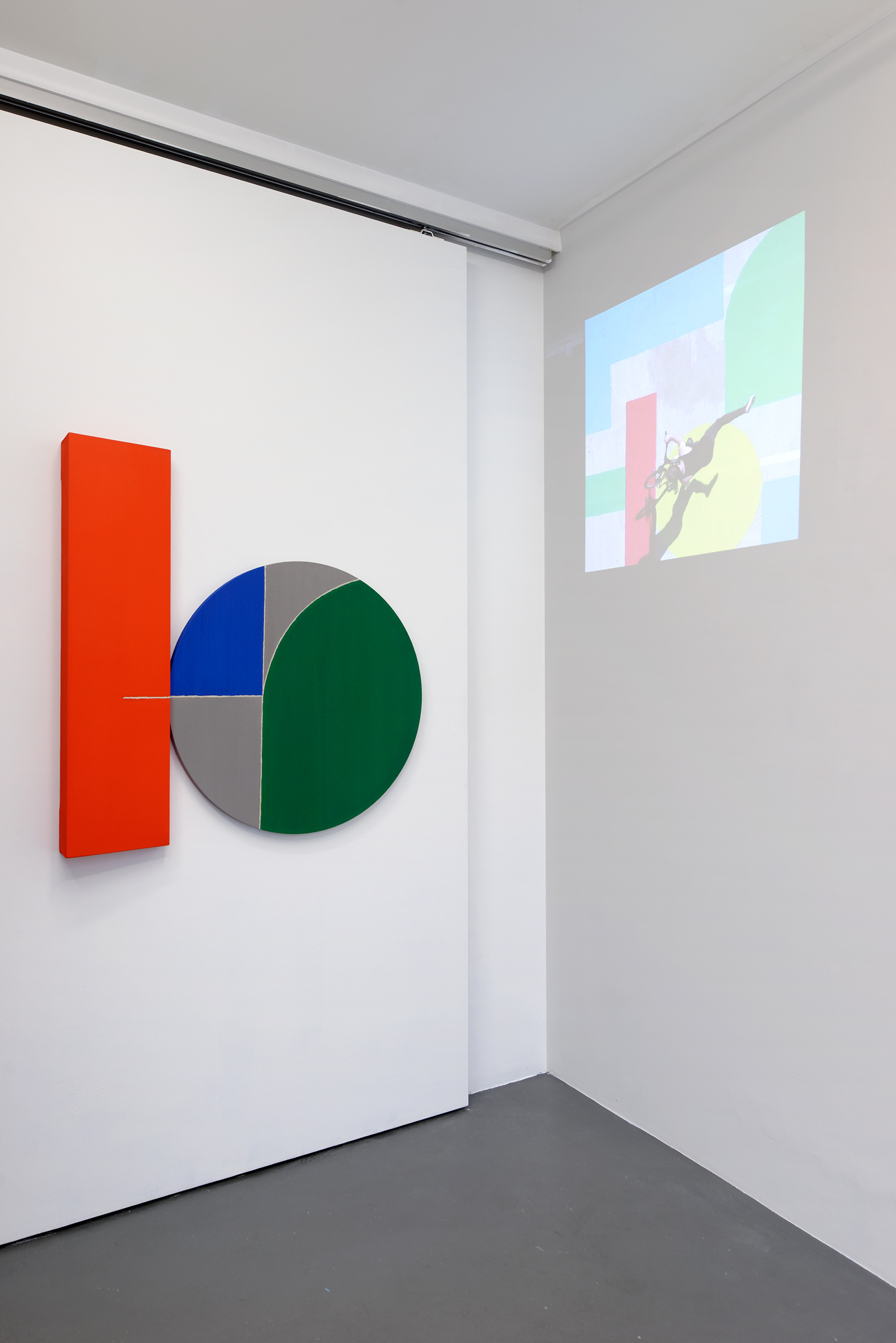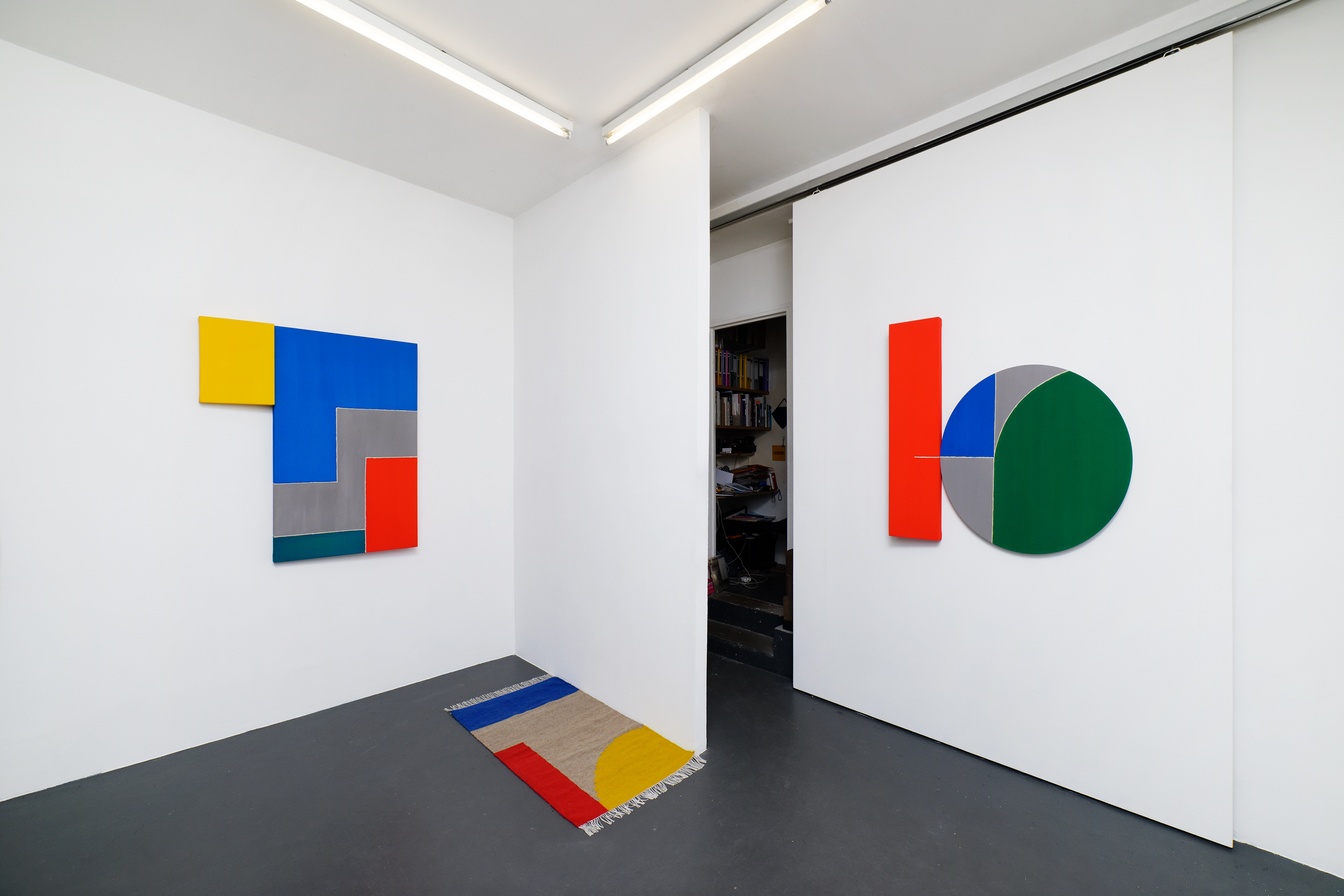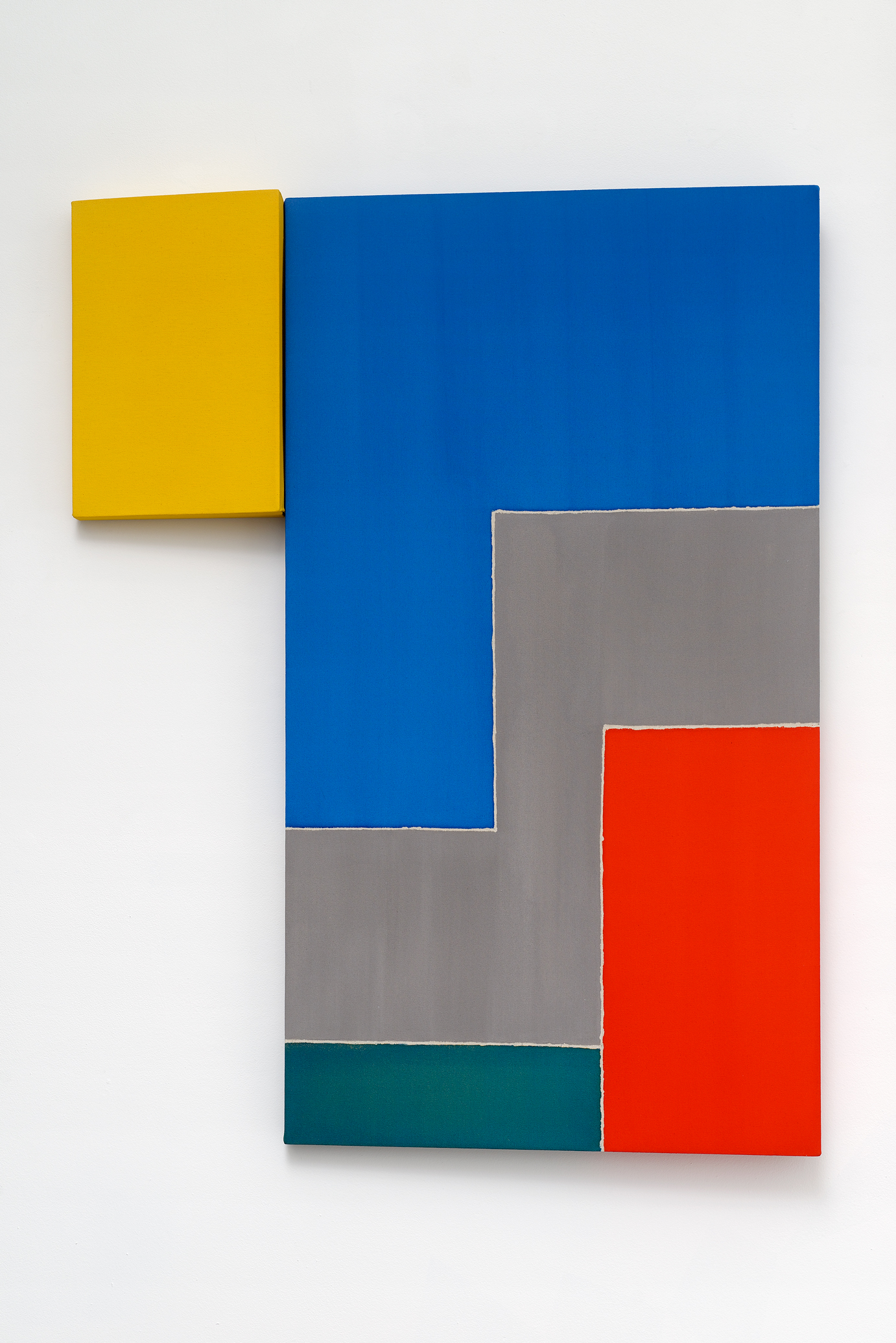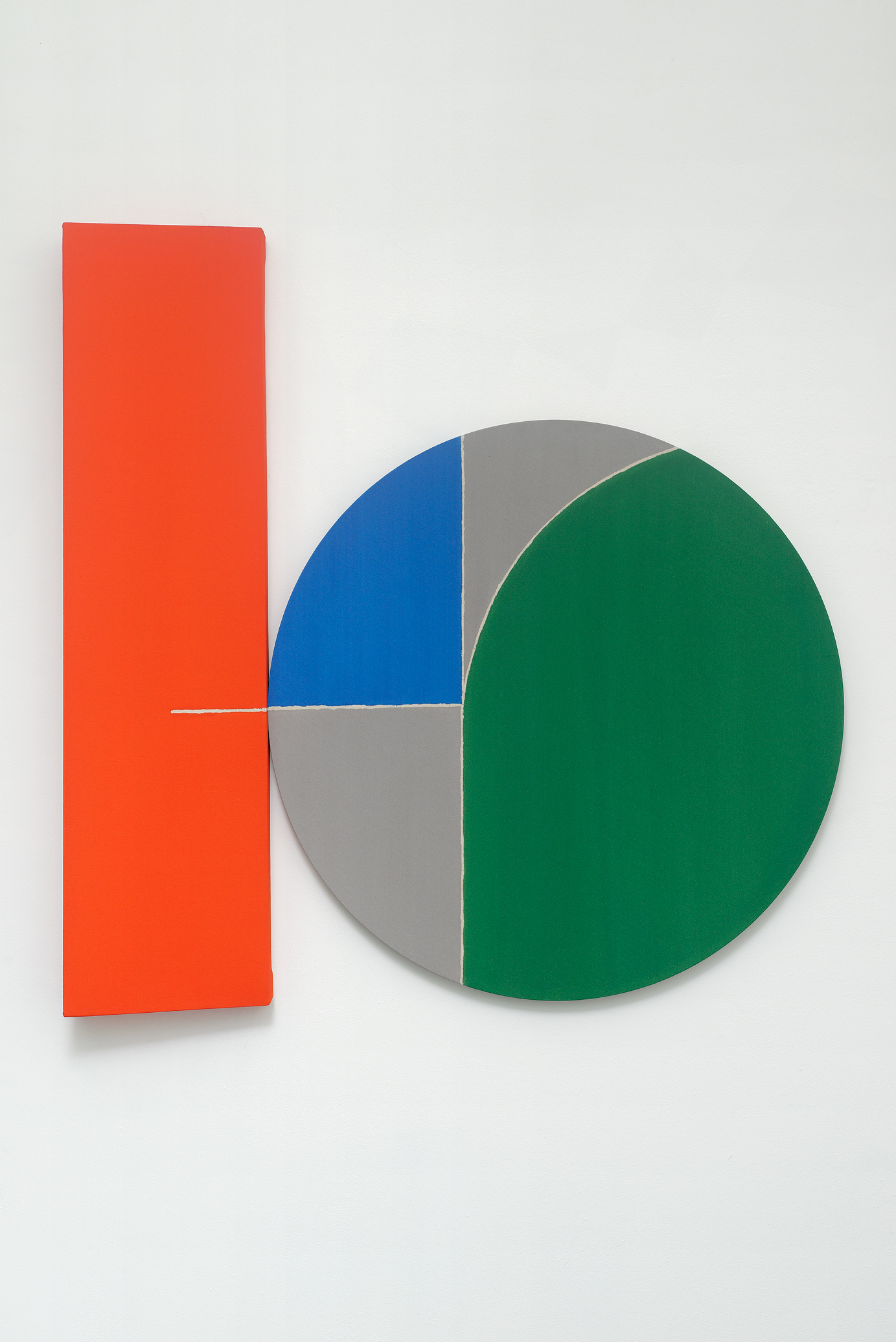Presentation :
APRÈS LE DISCO
Poised as Anton Stankowski, fierce as Frank Lloyd Wright and exuberant as Delacroix, Radu Comsa shakes any surplus off his imaginary world and ventures the realm off for optimization and improvement. Yet, there is no lack of sophisticated taste in his boldness! Radu Comsa simply emphasizes Dieter Rams?s idea of invisibility as a condition of knowledge whereby a good work entails a good deal of effort invested in the tedious outlining of the tiniest points and minute details that contribute to the proper meaning of his work.
His methodology and objectives are very clearly defined in ?Après le Disco?, an exhibition where visualization, the visual rendition of ideas, functions and processes through painting and installation-based assemblages call for an active mental participation. This is a space where the public?s own rational faculty and power of deliberation are simultaneously undermined and under scrutiny.
Radu Comsa moves fast and is insidious in his research. He sets off with observations of color, perspective and form, and reaches as far as the performative dimensions of his own body vis-à-vis the object. His work talks loudly of gestalt in the vein of Paul Signac with his division of color and of Charles Biederman, the structurist, whose works attempted to capture the "structural processes". In doing so, he puts himself in the company of those who have changed the reading of painting forever. And it?s in reading and not in seeing that Radu Comsa?s works are most potent. He consciously embraces a purist way of layering paint on the canvas as he mixes the four true colors according to the principles of Leon Battista Alberti. Then, outrageously, he includes grey. Comsa knows very well that he can rely on grey. In cement or on canvas, the fight for the perfect grey has made him rather unique. What he actually does when working with grey is to ask what is it in itself: a generally accepted code, CMYK, a molecular structure or optical stimuli.
This technique has made him understand form and light in a particular way that is dangerously unstable. His works are rather over-staged and reconfigured, prone to be turned into a game or a neurological enquiry of the mechanisms of perception. They are anchored in our deplorable inability to pin down reality. In this ?game?, juxtaposition plays a crucial role, and this is where Radu Comsa completely embraces honesty. Each color field to its own. To lessen the shock, he shows he can be extremely calculated when thinking of an installation or, on the contrary, he chooses the freedom close to chance when his works turn into climates, composed by angled canvases, multicolored carpets or fiber curtains, which urge the viewer to adapt to the negative space, that which is outside the object altogether. In ?Après le Disco?, he engages with ?what if? through the realization of material, which is in addition to the world. The material is not an interpretation of the world, it?s in addition to it. And he holds true to the view of the world as this addition. The photo receptors in the eye respond to a specific color, they don?t describe the color. I would say that Radu Comsa wants to find out if blue is tremendously un-blue. Even more, ?what if? the blue is not even important in this equation? In his own words, to miss what?s going on outside the blue is to miss the many factors that make blue blue. To understand such claim is to look ontologically at the work of art. He does exactly that. Radu Comsa sets in motion many factors prone to destabilization, because of the direct relation of his works to his own body and mind. To a certain extent, every artist does this due to the inescapable isolation necessary to the act of creation. Only that Radu Comsa?s biological data is used to destabilize the work itself by imposing a reading that has direct links to his body. From here on, there is no point in talking about abstract art anymore. He knows that abstraction is only abstraction in formalist terms, but de facto there is nothing abstract in this world, only interpretations given by the mind and by our physical limitations. Hence, we are talking about the problem of access, needless to say of seeing things which are not there. The content is not outside, never outside. The content is in the artist?s own proportions, and also in the chair on which he sits or the table he works at, in the way light penetrates all these. Such facts create tension in the public, who needs to get physically adjusted to the work. More concrete evidence of Comsa?s architectural and design interests is provided in the way he looks at Josep Lluís Sert?s Joan Miró Foundation in Barcelona. He takes on recurring themes such as balance, space, color, light, substance, keeping a close eye to nature like all avant-garde architects who adopted such view: Wright, Gropius, Mies van der Rohe and Le Corbusier. He nevertheless urges us to look inward to find the truth in ourselves and gives us a reading that is our own regardless the many layers of sensory-closures he imposes in his work.
Alex Mirutziu
-
This text (accurately paraphrased by Tudor Vladescu) has been informed by a series of conversations between Alex Mirutziu and Radu Comsa, long-time friends who share complementary creative philosophies and the same huge appetite for knowledge.
Alex Mirutziu is a Romanian artist who?s complex practice (installation-based performances and writings) coexists with more theoretical endeavors (lectures, master classes and dialogues with artists, writers, musicians, designers, philosophers, among which Grit Hachmeister, Paul Devens, Elias Merino, Graham Foust, Graham Harman).
Tudor Vladescu holds a PhD in philology and an MA in cultural anthropology. He is a freelance lecturer, currently working on Writing and Composition with the Culinary Institute of America, Singapore and the European Culture and Civilization with the Singapore Institute of Technology.


